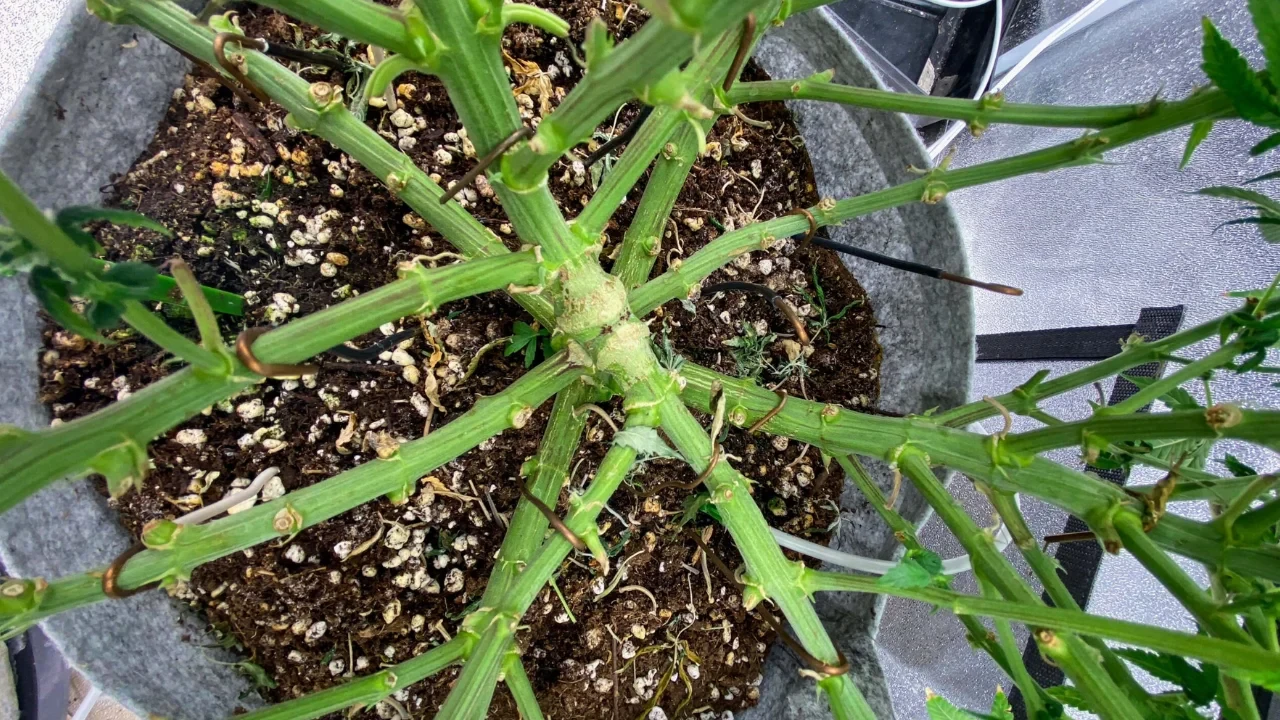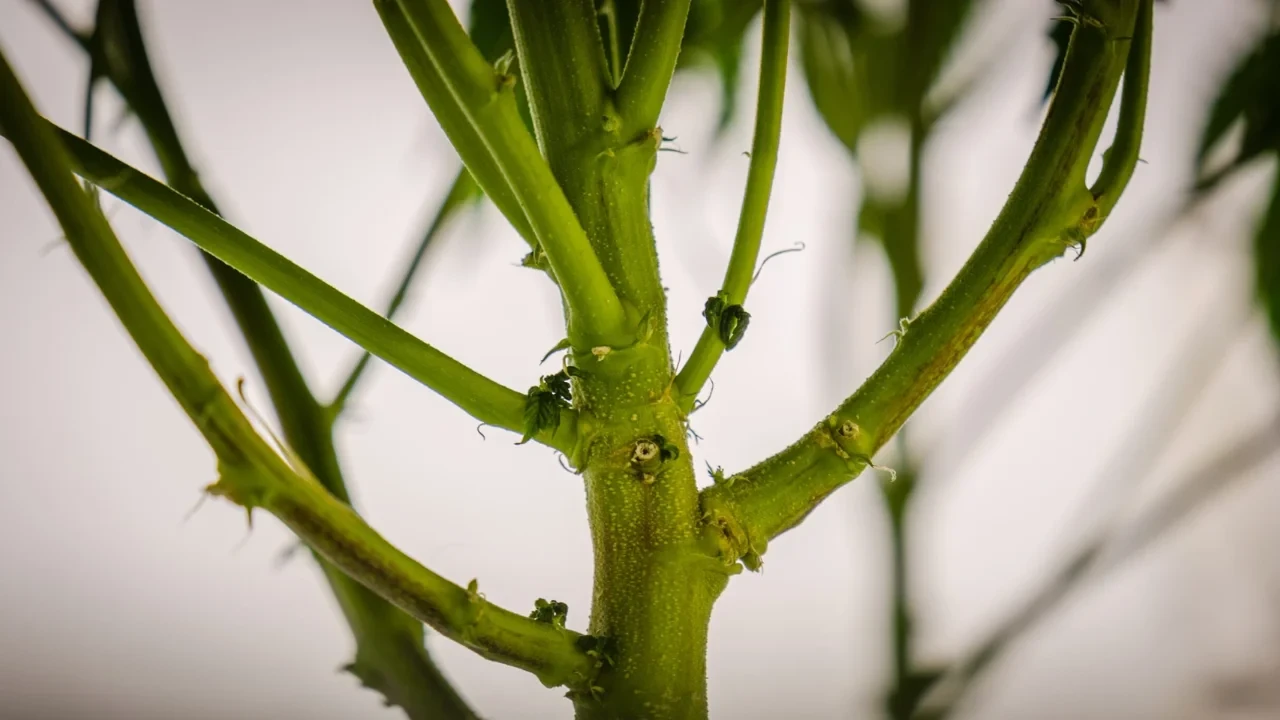On the list of viable training techniques, monster cropping marijuana is not as popular as others. It is somewhat new in the world of cannabis growing. Still, you should not knock until you try it. After all, you can see desirable results when you apply this method.
If it is something you are interested in, this monster cropping guide will tell you what you need to know. Continue reading to learn more.
What Is Monster Cropping?
If you are looking for another training technique to try, consider monster cropping cannabis. Some people refer to it as "flowering clones." The method involves taking clones from the mother plant. You would put the clones back in the vegetative phase.
It may seem like you are cutting down your main plant, but the cannabis remains unaffected by the process. This technique is preferable to some growers, and you can monster crops indoors and outdoors. You do not need to keep maintaining the same plant for continuous harvests.
The result is an extremely bushy plant with plenty of nodes. The successful clones likely will look ugly compared to the mother. Perhaps that is why growers refer to this method as "monster" cropping.
Keep in mind that the clones usually take a while to take root. The average time is about a week. A few of them might not even take root at all. Still, you can end up with more cannabis than what you started with when monster cropping.
Monster cropping is a technique that takes plenty of patience. You can perform this method if you are not pressed for time.

Advantages of the Monster Cropping Method
Besides helping you cut down on energy costs, monster cropping is effective for a larger yield size. The cloned offspring that the cannabis produces can sprout multiple bud sites.
However, the extent to which the yield increases depends on a variety of factors. Much of what you do, while the cannabis grows, can influence the quantity.
Since the clones will be bushier, they will have more side branches to soak in the light. Combined with other training methods, the plants can distribute energy for multiple juicy colas. Monster cropping is a cost-effective way to get multiple harvests.
After all, you can make better use of your lights, air, and growing space.
The difference between monster cropping and other high-stress techniques is the growth effects. Other methods can stunt growth, but monster cropping does not directly impact it. The plants will keep on going and turn into a worthwhile harvest.
Another effect monster cropping has on the yield is potency. Since the process offers controlled stress, you can achieve specific characteristics. The stress encourages the natural defenses of cannabis, and the plants produce more resin as a result.
Not only will you get more buds, but they will have more terpene-rich trichomes as well. Monster cropping might not work for everyone, but it is definitely worth a try.
Can You Apply Monster Cropping to Autoflowers?
You can apply monster cropping on a variety of marijuana strains. However, autoflowers are another story when it comes to this training method. If there is one disadvantage, it would be that you cannot clone a great autoflower strain. Avoid monster cropping on these types of plants.
The reason why autoflowers are not suitable is that they cannot re-enter the vegetative period. You generally would change the light cycle to re-veg other strains. Autoflowers do not need a strict light cycle to change growth stages.
An autoflower's smaller size makes it difficult to clone. Of course, other short and slow-growing strains should avoid monster cropping. The stress could damage it with less time for recovery as well.
Some growers claim to be able to clone their autoflowers. They might have been able to do it while still in the vegetative period. Still, it would be extremely hard to do, and the results most likely will not be worth it.
When Can You Start Monster Cropping?
Monster cropping has another aspect that separates it from other training techniques. Unlike the others, you do not train while in the vegetative stage. Instead, monster cropping takes place while the cannabis is flowering.
Specifically, the best time is about 2-3 weeks into the flowering period. You can choose to monster crop a little later if you need to. However, the clones can take more time to re-veg the longer the mother plant is in the flowering stage.
You may have heard many reasons why the vegetative phase is optimal for training, so this might seem strange. Usually, making clones during this period does not negatively affect the mother or offspring much.
Still, monster cropping better preserves genetics when you do it while the weed is flowering. Also, you can make time for other training techniques since they occur much earlier than monster cropping. After you finish, your clones receive an extra three weeks for their growth.
What You Need for Cannabis Monster Cropping
You will need several items before you begin monster cropping your weed. First, you need something sharp to remove the clones without hurting the main plant too much. Dull blades can crush the base of the stem and make it hard for roots to grow. Scissors, a knife, or a scalpel will do the trick.
Grab some alcohol wipes to clean off your cutting tool. You can reduce the chances of an infection, especially when you are working with multiple plants. Another thing you will need is a container filled with water. After you remove the stems, the clones should soak for a bit.
Some growers use rooting gel to seal the cut instead of water. While several people keep the cuttings in the container, others use rockwool cubes or perlite to root the clones. What you choose is up to you.

How to Apply Monster Cropping?
As mentioned before, monster cropping can take a while to do. It is a good idea not to rush it to avoid the risk of making a mistake and killing the clones. There are a few steps you need to follow if you want a successful training session with your cannabis. Here is what you should do:
1. Choose the Best Flowering Strain
The first step is to choose the best flowering strain. Again, smaller and slow-growing plants are less than ideal for monster cropping. Find some that grow large and fast during the vegetative phase and early flowering. However, a medium-sized plant might work best if you have limited growing space.
There are plenty of options on the market that are great for monster cropping, either indoors or outdoors. You can try multiple different kinds to see which ones are perfect for you.
The best kind grows plenty of branches and buds, and the clones can do so as well. You can get back to flowering and harvesting with these strains. Not only that, but large strains can offer more potential clones. Since some of them do not root successfully, it is good to have multiple candidates.
During the flowering stage, select which plants are tall and bountiful. You will want to pick the ones that look viable for successful cloning.
It is necessary to pick cannabis that does not show signs of illness or deficiencies. The clones should come from a healthy and vigorous mother plant.
2. Take Cuttings
Grab the scissors or a clean knife once you choose which of your plants to monster crop. Select one of the lower branches of the cannabis plant. Technically, you could select any of the stems. However, the lower ones tend to root quicker than the branches on top.
Place the knife a little below the node. Then, you use your sharp tool to cut the base of the stem diagonally. The diagonal cut allows the cutting to have more surface area at the bottom of the stem. A bigger surface area means water and nutrients can enter the cutting and keep it healthy. Not to mention, a new root system can emerge.
Again, not every clone will be successful, so take a little more than what you need. For instance, you should take seven cuttings if you desire four clones.
At the same time, it is necessary to keep things balanced when you remove branches from the mother cannabis. You will still want a decent first harvest. It is why a big, bushy strain is the best choice for monster cropping.
3. Repair
Typically, monster cropping should not risk damage to your plants compared to a method like super cropping. A couple of people might make the mistake of making a tear in the stem where they make the cut. They might have had a dull blade. When handling the cuttings, they accidentally may have broken one of them.
Often, growers use duct tape to bandage any splits or break a branch has. You should have some ready to use. Quickly apply it to the stem and immediately move on to the next step. You can add duct tape while the clones are in the water if you are worried about the base being exposed to air for too long.
4. Sprout Roots
This part of the process will require a mixture of skill and luck. With your container filled with water, immediately soak the cuttings for a while. Usually, people keep them in the container until they see some roots sprout. Then, they start planting safely and move on to the next step.
Soaking the clones in water is crucial in monster cropping because it prevents air from entering the stem's delicate vascular system. If air enters the clone, it could cause the plant to die. You can also use some rooting gel and rockwool cubes instead.
Some growers use a rooting hormone on the clones before placing them in the water. The hormone can help to improve their chances of the new clones surviving. Dispose of any clones that failed to take root.
5. Take Clones Back Into the Vegetative State
Once you have transplanted your clones, it is time to revert them to their vegetative state. The lighting cycle can do the trick. Most growers choose to go for 18 hours of light and 6 hours of darkness. Others prefer a 20/4 light cycle instead since the clones absorb more light.
A few of them even choose 24 straight hours of light.
More light means more energy for the growing plants to give their roots. However, the bulbs do not need a lot of intensity quite yet. For nutrients, provide the clones with what you would give any other developing weed during the vegetative phase.
Soon, the clones will begin to re-veg. You will start to see them grow into an odd shape for around 3-4 weeks. The duration can depend on how long the original plant was flowering, but each clone behaves differently. The leaves may be round, but the cannabis will have many new branches.
During this step, avoid disturbing the buds of the clones since it adds more stress. Once they are in the vegetative phase, you can apply other training techniques. Flowering and harvesting occur as normal.
Final Thoughts on Monster Cropping Weed
Monster cropping can pay off when done correctly. If you do not mind your plants looking a little funky, this training method can greatly improve your harvest. Monster cropping works well with techniques like fimming and low-stress training.
If you are interested in this method, prepare by selecting a suitable strain. As mentioned before, you want plants that sprout plenty of branches. If you want a bushy plant, the sweet-tasting Gelato feminised seeds can grow to a decent size.
Contact us to learn what other strains are great for monster cropping.





